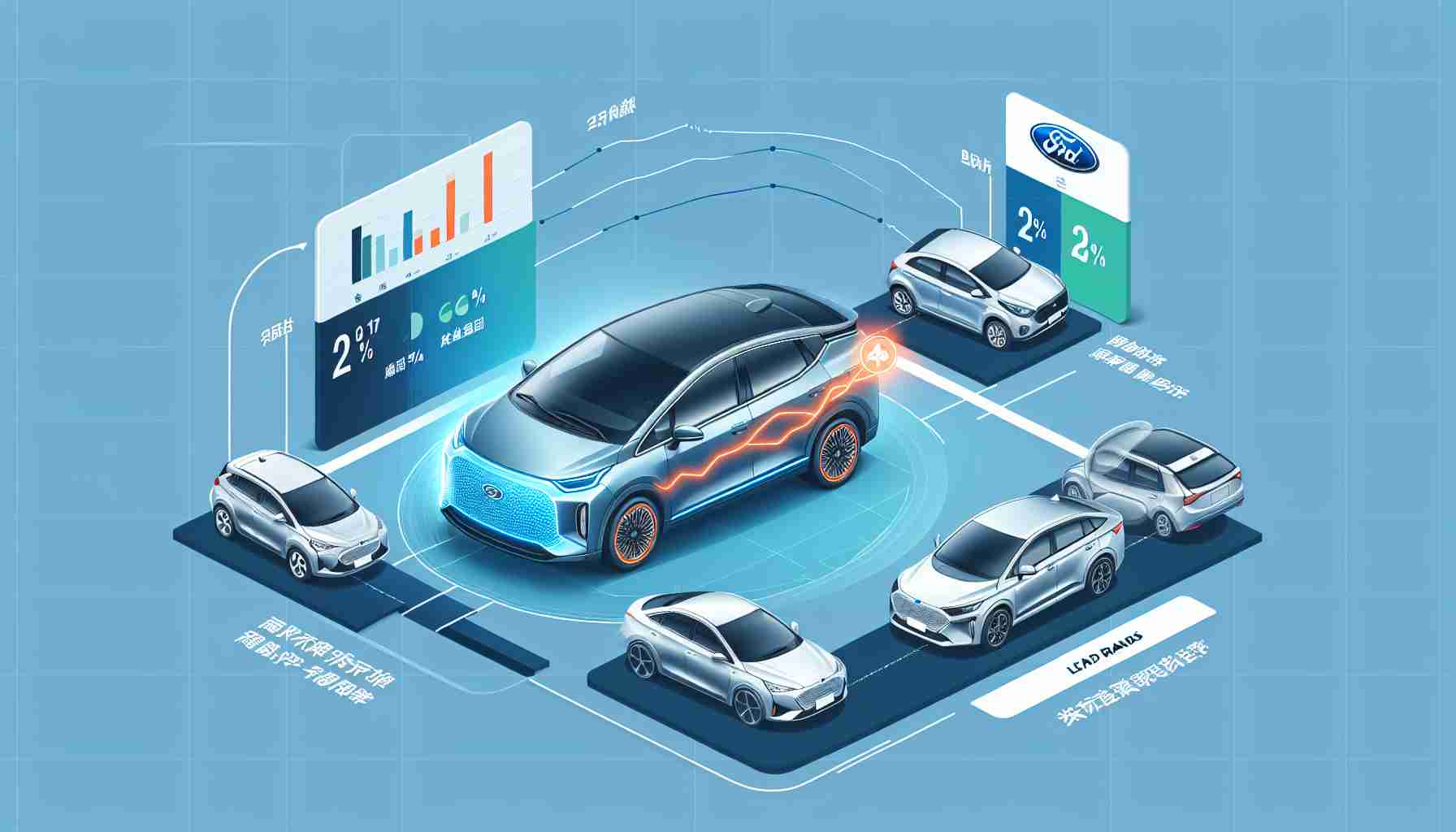The electric vehicle (EV) market in China experienced a varied week during the 19th week of the year, with noteworthy shifts in the sales of new energy vehicles (NEVs). Despite the mixed performance across the industry, BYD stood out with significant growth.
BYD secured the leading position with an impressive 30.23% increase in registrations, translating to 68,500 vehicles in just one week. The first half of May mirrored this success, with the company reaching an astounding 101,300 vehicle registrations.
In contrast, two key players, Tesla and Xiaomi, faced challenges during the same period. Tesla’s registrations decreased by 10.91%, amounting to 9,800 vehicles. This downturn was also evident in the individual performance of its Models Y and 3. Xiaomi encountered a similar decline, with vehicle registrations dropping by 15.38% and culminating in its third consecutive week without a rise in numbers.
Other notable brands also saw fluctuations. Li Auto experienced a surge of 50.94% in vehicle registrations, totaling 8,000 vehicles. The variety within Li Auto’s range, from the more compact Li L6 to the newly introduced Li Mega minivan, reflects the breadth of consumer choice available.
Huawei’s affiliated brand, Aito, and the Stellantis-supported Leapmotor both enjoyed significant sales hikes, with registration increases of 25% and 104.35%, respectively. Meanwhile, Nio recorded a solid 22.22% growth.
As the EV landscape continues to evolve in China, industry watchers monitor these trends closely, underscoring the competitive and dynamic nature of the market.
Key Questions and Answers:
1. What are the key factors driving BYD’s success in the Chinese EV market?
BYD’s success can be attributed to a wide range of factors, including a broad product portfolio, advancements in battery technology (including their Blade Battery), strong governmental support for EVs, and increasing consumer preference for eco-friendly and advanced technology vehicles. Additionally, BYD’s strategy of focusing on vertically integrating components may also contribute to cost savings and improved quality control.
2. Why are Tesla and Xiaomi lagging behind BYD?
Tesla’s lag in China could be a result of multiple factors such as competition from local brands, any impact from US-China trade tensions, or possibly consumer’s fears regarding safety or price perception. For Xiaomi, as a relatively new entrant into the automobile industry, production ramp-up, brand recognition in the EV space, and robust competition might explain their slower start compared with established players.
Key Challenges and Controversies:
The Chinese EV market faces challenges including supply chain disruptions, rising raw material costs, and concerns over the disposal and recycling of batteries. There is also competition among domestic and foreign manufacturers, regulatory challenges, and the need for infrastructure development, such as charging stations.
Controversy lies in how the Chinese government’s subsidies are affecting competition in the market. There is a debate over whether subsidies unfairly benefit larger, well-established companies or if they are necessary to foster innovation and adoption of EVs.
Advantages and Disadvantages:
The expansion of the EV market in China offers various advantages. It aids in reducing pollution and greenhouse gas emissions, decreases reliance on fossil fuels promoting energy independence, and fosters innovation in new technologies. However, there are also disadvantages such as the high initial cost of EVs, concerns about battery life and performance, reliance on rare earth materials for battery production, and potential job losses in traditional automotive industries.
Related Links:
For the latest news and developments in the electric vehicle market, you can visit:
– BYD
– Tesla
– Xiaomi
Please ensure that any further detailed searches are conducted with care as URLs provided are to the main domain only, and the latest information and trends will require specific, up-to-date queries.
The source of the article is from the blog krama.net
